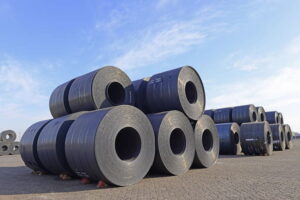
Salzgitter reported a massive dip in production, sales and orders in the second quarter, especially from its activities in the automotive and energy industries. The fall was less hard for construction-related activities, although the bottom in this sector may yet be reached, the company says.
Compared with Q2 2019, capacity utilisation dropped between -10% and -70%. “The slump in demand, from the automotive industry in particular, created a burden, while the construction sector proved to be stable,” Kallanish hears from the company.
The units that depend heavily on the automotive and energy consumer groups therefore saw order intake virtually halve on-year in Q2. For steel strip it dropped from 1.144 million tonnes to 641,000t, for tube from 344,000t to 178,000t.
The dip was less pronounced in the Plate/Section business unit, where the order intake went down by some -25% to 511,000t. For sections, the construction industry, as the key customer, proved to be robust in the first six months of 2020 on the back of existing projects. However, there is less willingness to invest in new construction projects, which will impact the second half of the year, Salzgitter predicts.
For the tubes business, the firm says the first signs of recovery materialised in June. Markets in the Far East, especially, which were the first to collapse from the Covid-19 pandemic, have recovered somewhat earlier than other regions.
Still, the company is very cautious with making a general performance forecast, citing further risks from currently unforeseeable trends in selling prices, input material prices and capacity developments. It anticipates a negative pre-tax result in the low to mid-triple digit million euro range.




